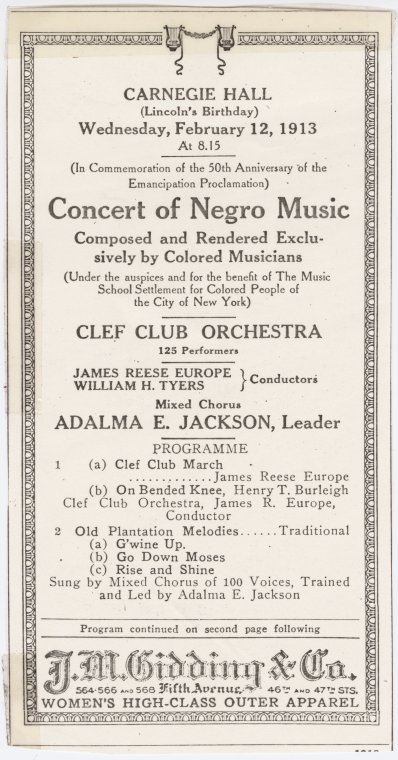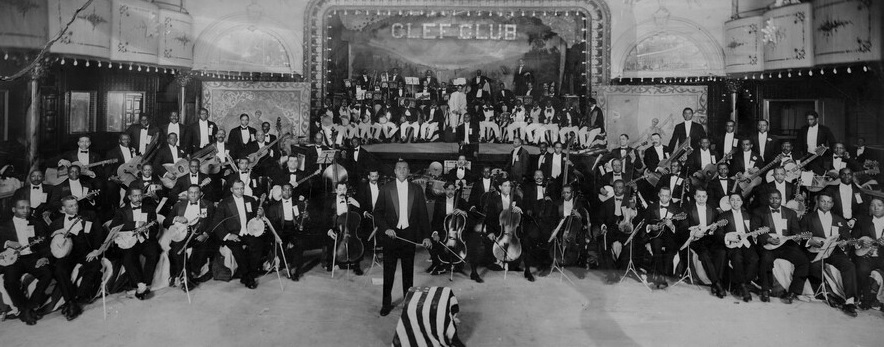 That James Reese Europe would lead a band in concert at Carnegie Hall was inevitable…but the event has been historically overlooked. The band leader had been the musical director for Black Broadway at twenty-three, and the preeminent society orchestra leader in New York, later playing for the Astors and the Vanderbilts. Europe seemed a natural fit for the kind of director to play Carnegie Hall.
That James Reese Europe would lead a band in concert at Carnegie Hall was inevitable…but the event has been historically overlooked. The band leader had been the musical director for Black Broadway at twenty-three, and the preeminent society orchestra leader in New York, later playing for the Astors and the Vanderbilts. Europe seemed a natural fit for the kind of director to play Carnegie Hall.
On May 2nd, 1912, Europe got his chance. At 8:15 pm, a racially mixed audience filled the sold-out concert hall. The concert, celebrating “Unique Negro Music,” supported the “Music School Settlement for Colored People.” Europe’s 125-piece Clef Club Orchestra quickly captivated its audience.
 The Clef Club arose out of the racial segregation prevalent at the time. The New York local of the American Federation of Musicians did not properly serve the few Blacks that were allowed to join, so in 1910 Europe helped establish a rival organization, the Clef Club, serving as a fraternity club, labor exchange, and concert venue in Harlem. Naturally, it had its own orchestra.
The Clef Club arose out of the racial segregation prevalent at the time. The New York local of the American Federation of Musicians did not properly serve the few Blacks that were allowed to join, so in 1910 Europe helped establish a rival organization, the Clef Club, serving as a fraternity club, labor exchange, and concert venue in Harlem. Naturally, it had its own orchestra.
James Reese Europe’s aspiration was greater.
Europe wanted to reveal “the musical proficiency of the African race.” He knew his audience, and later told his band, “If we are to develop in America, we must develop along our own lines.” Europe’s plan involved bringing ragtime, blues, and spirituals to the prestigious music hall.
When the opening numbers played, the audience smiled, cheered, and banged banisters to the rhythm. Many people, however, didn’t get Europe’s message. One musician remembered how “All the high tone, big time folks would say, ‘Isn’t it wonderful how these untrained, primitive musicians can pick up all the latest songs instantly without being able to read music.’”
Unbeknownst to the audience, Europe’s band contained music reading masters. While not all 125 members of the orchestra could read music, many could. Europe had a practice of always putting “a man who can read notes in the middle where the others can pick him up.”

“The Europe gang were absolute reading sharks,” Eubie Blake later recalled, “They could read a moving snake, and if a fly lit on that paper, he got played.” At the end of the night, the raucous applause abated after the Clef Club Chorus sang Will Marion Cook’s “Swing Along” three times.
The concert was such a success that James Reese Europe returned again in 1913 and 1914. New Yorkers waited ten years before hearing symphonic jazz again with Paul Whiteman. Carnegie Hall waited twenty-five before the arrival of Benny Goodman’s band.
James Reese Europe, meanwhile, had already introduced Carnegie Hall to its first night of jazz’s roots.
Jack Seufert lives in Parkton, MD.





















